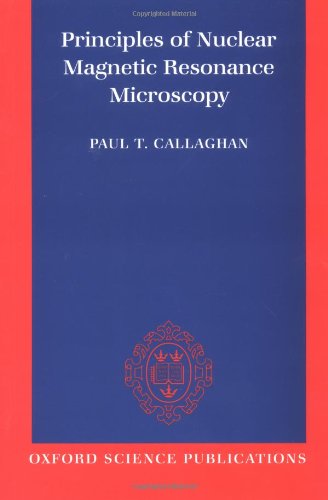Principles of Nuclear Magnetic Resonance Microscopy download
Par dunlap ross le dimanche, septembre 18 2016, 08:07 - Lien permanent
Principles of Nuclear Magnetic Resonance Microscopy by Paul Callaghan


Principles of Nuclear Magnetic Resonance Microscopy Paul Callaghan ebook
Publisher: Oxford University Press, USA
ISBN: 0198539444, 9780198539445
Page: 512
Format: djvu
This excellent introduction to the subject explores principles and common themes underlying two key variants of NMR microscopy, and provides many examples of their use. In addition, the similarity between 19F and 1H ( regarding their NMR properties) is a prerequisite for a meaningful overlay between the anatomical 1H MRI with the 19F MRI of labeled cells. Callaghan, Principles of Nuclear Magnetic Resonance Microscopy, Clarendon, Oxford, UK, 1991. Prior to the development of three-dimensional magnetic resonance imaging (MRI), the tracking of immune cell migration was limited to microscopic analyses or tissue biopsies. And how it's Smaller objects, such as viruses, or even molecules, are not visible in a microscope. Optical-atomic magnetometers are based on a different principle – one that, curiously, is something like NMR in reverse, except that optical-atomic magnetometers measure whole atoms, not just nuclei. According to MR principles, the lowest detection limit is 1018 spins per voxel 24. The structure determination of proteins by in-cell NMR spectroscopy opens new avenues to investigate at atomic resolution how proteins participate in biological processes in living systems. In-cell NMR spectroscopy advances our understanding of . Magnetic resonance works by the interaction of electromagnetic radiation with the atomic nuclei in the presence of a magnetic field. Since light is nothing else than electromagnetic radiation, it seems a straightforward idea to use an approach similar to optical imaging in order to get spatially resolved NMR spectra. The resulting response by the total magnetization (M) of the nuclear spins is the phenomenon that is exploited in NMR spectroscopy and magnetic resonance imaging. 4Center for Magnetic Resonance Research, Department of Radiology, University of Minnesota Medical School, 2021 Sixth Street SE, Minneapolis, MN 55455, USA 5Department of Electrical and Computer Engineering, University of Minnesota, 200 Union Street SE, P. However, a proton and neutron will have lower energy when their spins are parallel, not anti-parallel, as this parallel spin alignment does not infringe upon the Pauli principle, but instead has to do with the quark structure of "Magnetic resonance microscopy: recent advances and applications". Understand the physical principle of MR imaging 2. Write a Review: Principles of Nuclear Magnetic Resonance Microscopy http://www.organic-supermarket.com/0198539975/organics Published by organicsmarket.